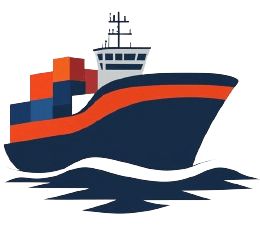Quantum Computing for Logistics vs. Traditional Computing
| Criteria | Quantum Computing for Logistics | Traditional Computing for Logistics |
|---|---|---|
| Definition | Utilizes principles of quantum mechanics to process information at unprecedented speeds. | Uses classical bits to perform calculations and process data. |
| Data Processing Speed | Extremely fast processing capabilities, potentially solving complex logistics problems in seconds. | Relatively slower; complex problems can take considerable time to solve. |
| Complexity of Problems Solved | Can handle exponentially more complex problems, including real-time global optimization and large-scale simulations. | Limited to polynomial time complexity; struggles with NP-hard problems. |
| Energy Efficiency | Potentially more energy-efficient per calculation due to faster processing and lower power needs per operation. | Less energy-efficient due to the high power requirements of extensive computational tasks. |
| Implementation Cost | High initial investment in technology development and infrastructure. | Lower initial costs, with well-established infrastructure and technology. |
| Scalability | High scalability potential once fully developed, suitable for expanding global logistics operations. | Scalable but may require significant hardware expansion to handle larger datasets and more complex simulations. |
| Error Rates | Currently higher error rates due to qubit sensitivity, but improvements are rapidly being made. | Lower error rates with mature error correction techniques. |
| Data Security | Offers potentially unbreakable encryption methods using quantum key distribution. | Conventional encryption methods vulnerable to quantum attacks in the future. |
| User Expertise Required | Requires highly specialized knowledge in quantum mechanics and quantum computing. | Requires knowledge in computer science and software engineering, more widely available skills. |
| Operational Flexibility | Once operational, offers significant flexibility in handling dynamic, complex logistics operations. | Flexible within the scope of traditional algorithms and computing power. |
| Adoption Stage | In early stages of adoption with significant research and development ongoing. | Widely adopted with a proven track record in logistics management. |
| Maintenance and Upkeep | High maintenance requirements due to the delicate nature of quantum devices. | Relatively lower maintenance needs with robust, established technologies. |
| Future Potential | Promises revolutionary changes in logistics through superior optimization and predictive capabilities. | Incremental improvements expected with advancements in AI and machine learning. |
| Impact on Decision-Making | Could significantly enhance decision-making by providing solutions to previously intractable problems. | Currently supports decision-making within the constraints of classical computational limits. |
| Integration with Existing Systems | Challenges in integration with existing IT systems due to nascent technology. | Easily integrates with existing IT and logistics management systems. |
| Reliability | Reliability still under development, with sensitivity to environmental factors and quantum decoherence issues. | Highly reliable under a wide range of operational conditions. |
| Research and Development | Active area of research with substantial investments needed to realize practical applications. | Ongoing research primarily focused on software and incremental hardware improvements. |
| Accessibility | Limited accessibility due to current technological and cost barriers. | High accessibility with technologies available at various cost points. |
| Examples | Experimental applications in optimizing supply chains, route planning under uncertainty. | Global supply chain management, inventory control, delivery scheduling using established software platforms. |
| Environmental Impact | Potential for significant reductions in carbon footprint due to efficient logistics planning and operation. | Depends on the scale of operations but generally higher due to energy-intensive data centers. |
Quantum Computing for Logistics holds transformative potential with its ability to process complex logistics problems rapidly and efficiently. However, it currently faces challenges in error rates, cost, and integration. Traditional computing, while slower, offers reliability, widespread adoption, and integration with existing logistics systems.





